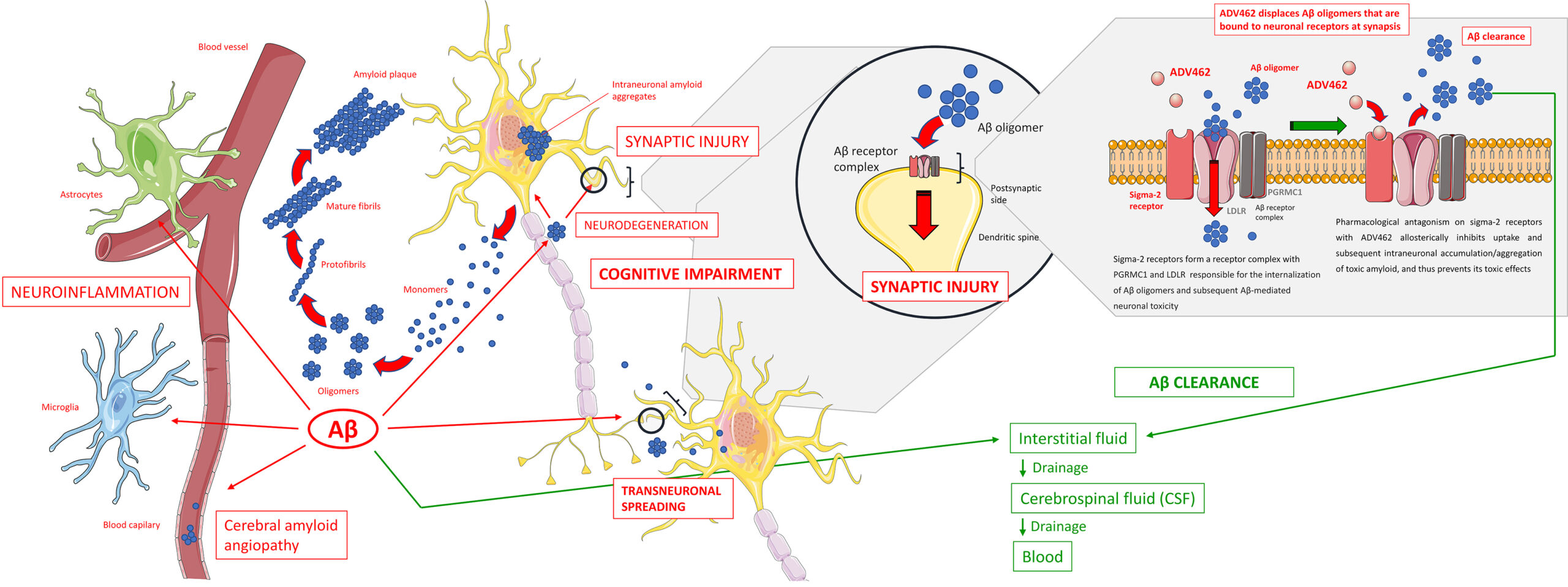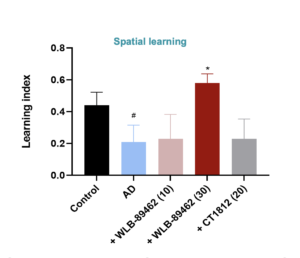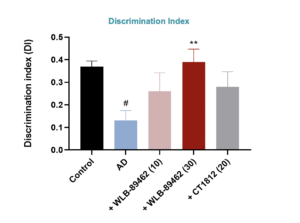ADV462-EAD for Early-onset Alzheimer’s Disease:
- Best-in-class Sigma2 antagonist
- High Potency
- Higher Selectivity
- Inactive Sigma1
- Oral monotherapy
- Pharmaceutical profile
- Low potential for clinical drug-drug interactions
ADV462: A Novel Approach to Early Alzheimer’s Disease
ADV462 is a uniquely designed molecule that targets multiple aspects of Alzheimer’s disease. Its mechanism of action is twofold: it enhances the clearance of amyloid-beta (Aβ) and restores damaged cellular processes, such as autophagy, cholesterol synthesis, homeostasis, transport, and protein trafficking. These pathways are often disrupted in individuals with APOE4 and other risk factors for Alzheimer’s disease.
ADV462 binds to the Sigma-2 receptor protein, a key component of the Aβ receptor complex, which also includes PGRMC1 and LRP receptors. This binding increases axonal myelination, improving learning and memory. Furthermore, ADV462 modulates tau hyperphosphorylation via cholesterol control, mitigating Aβ-induced tau proteolytic cleavage by calpain.
In the early stages of Alzheimer’s disease, ADV462 displaces and internalizes Aβ oligomers, mitigating their synaptotoxic effects. This strategy shows promise in slowing tau hyperphosphorylation and neuroinflammation of tau aggregates, thereby preserving cognitive abilities for a longer period.
The Sigma-2 receptor protein (σ2R/TMEM97) and PGRMC1 form a protein complex with LRP receptors, which regulate the uptake of apolipoproteins in neurons. Preclinical studies have shown that by displacing Aβ oligomers and preventing further oligomer binding, ADV462 can reactivate the brain’s damage control mechanisms. Neuroprotective effects have been demonstrated, independent of specific Aβ neurotoxicity. As long as neurons remain viable, synaptic density and function can recover, making ADV462 a disease-modifying therapeutic strategy.
Additionally, ADV462 regulates the PI3K/Akt-mTOR signaling pathway, which plays a crucial role in the central nervous system and is often over-activated in Alzheimer’s disease. This over-activation leads to neuronal hyperactivity, incorrect signal transmission, and senile plaque deposition. Preclinical studies using Microelectrode arrays (MEA) have shown that ADV462 can regulate synaptic transmission and neuronal plasticity in Aβ-induced impairment of synaptic transmission, recovering the spike rate.
In summary, ADV462 is a promising therapeutic strategy for Alzheimer’s disease, targeting multiple disease-causing pathways. As an amyloid-removing drug, it not only enhances the clearance of amyloid-beta but also restores damaged cellular processes. This dual action offers the potential to treat ongoing cognitive deficits and prevent further deficits from occurring, making ADV462 a significant advancement in Alzheimer’s disease treatment.
Learn more
In-vivo preclinical validation completed.
-
- Hippocampal Aβ injection in rats
- Transgenic Models of Alzheimer’s Disease 5xFAD in mice
- MWM: ADV462 significantly reduces the latency and distance to target in spatial learning in preliminary results
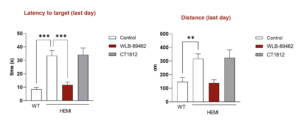
- T-MAZE: ADV462 attenuates cognitive deficits in preliminary results.
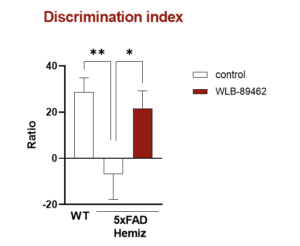
- MWM: ADV462 significantly reduces the latency and distance to target in spatial learning in preliminary results

